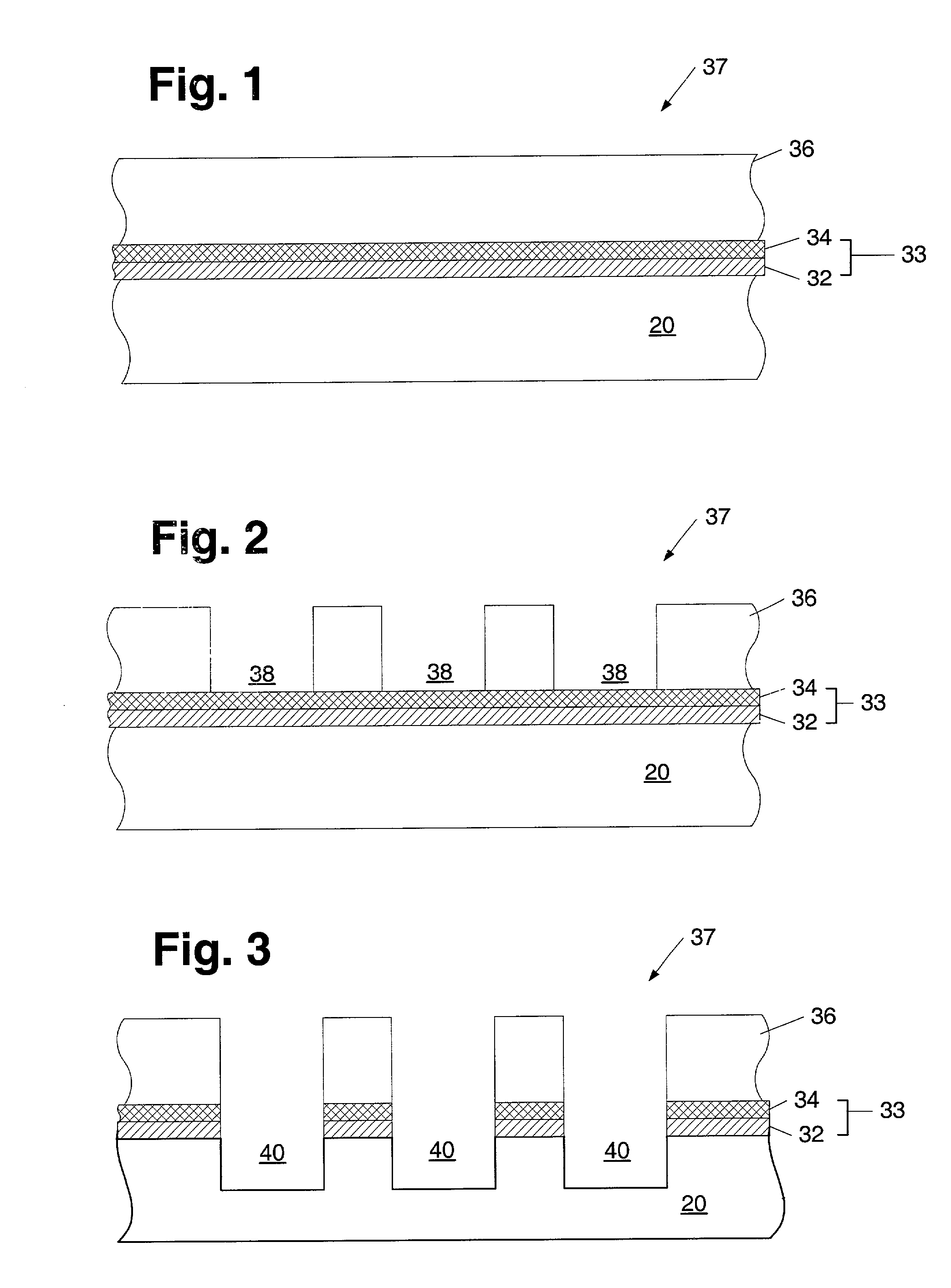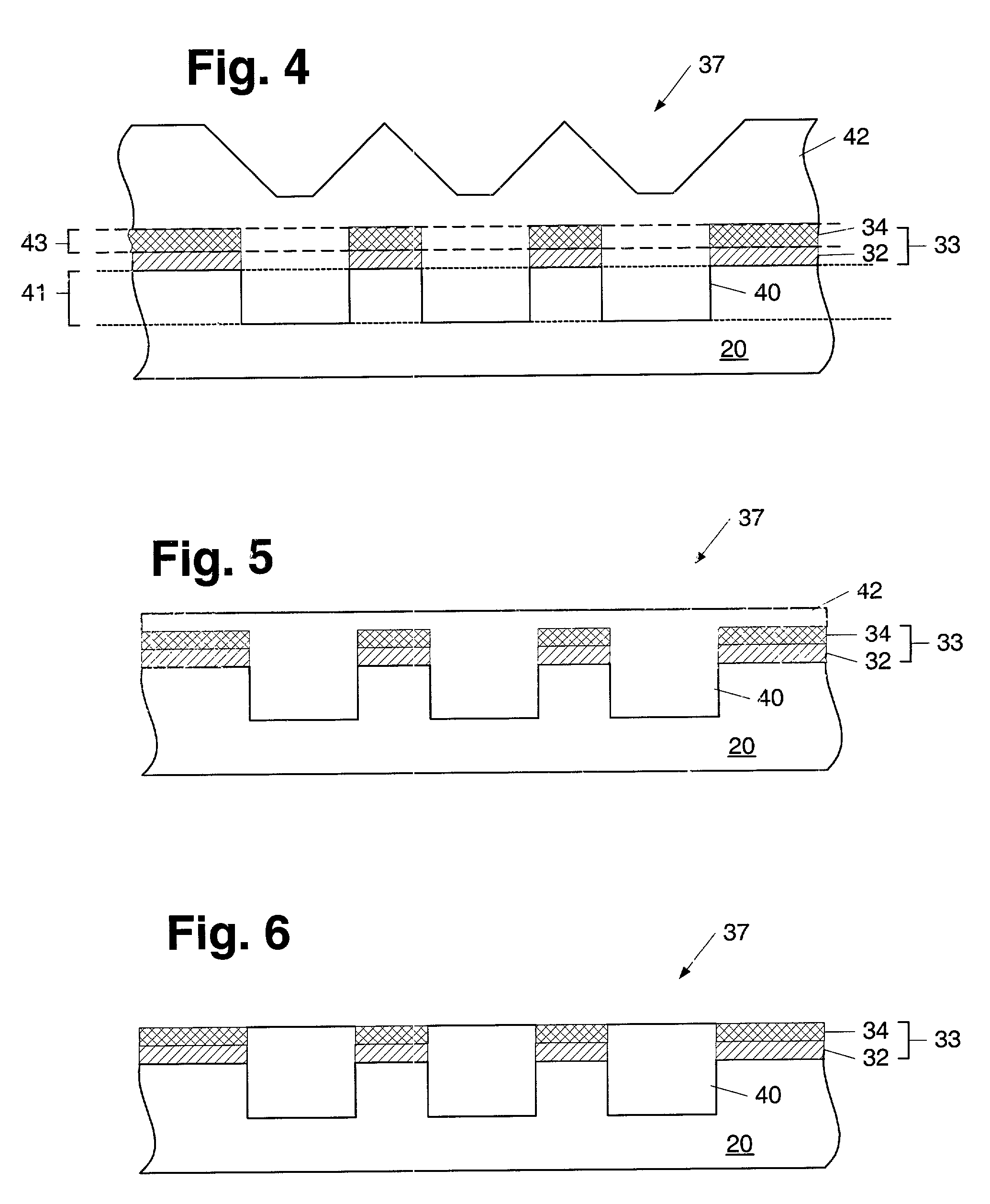Method of making a planarized semiconductor structure
a semiconductor structure and planarized technology, applied in semiconductor/solid-state device manufacturing, basic electric elements, electric instruments, etc., can solve the problem of not forming a planar surface, reduce the use of polish stop layers, reduce step height, and reduce the effect of step coverage problems and lithography problems
- Summary
- Abstract
- Description
- Claims
- Application Information
AI Technical Summary
Benefits of technology
Problems solved by technology
Method used
Image
Examples
Embodiment Construction
[0039]Turning to the drawings, exemplary embodiments of a method for processing a semiconductor topography are shown in FIGS. 1–12. In particular, a method is provided in which a polish stop layer may be eliminated from a polishing process. FIG. 1 depicts semiconductor topography 37 in which dielectric 32 may be formed upon semiconductor layer 20. Moreover, layer 34 may be formed upon dielectric 32, and resist 36 may be formed upon layer 34. Layers 32 and 34 may together form intermediate layer 33. Alternatively, intermediate layer 33 may include only either dielectric 32 or layer 34. In such an embodiment, the layer not included in intermediate layer 33 may be omitted. In particular, layer 34 may be omitted and thus resist layer 36 may be formed upon and in contact with underlying dielectric 32. Moreover, layer 34 may be formed upon and in contact with semiconductor layer 20 if dielectric 32 is omitted. In contrast, intermediate layer 33 may be omitted (omitting both layers 32 and ...
PUM
 Login to View More
Login to View More Abstract
Description
Claims
Application Information
 Login to View More
Login to View More - R&D
- Intellectual Property
- Life Sciences
- Materials
- Tech Scout
- Unparalleled Data Quality
- Higher Quality Content
- 60% Fewer Hallucinations
Browse by: Latest US Patents, China's latest patents, Technical Efficacy Thesaurus, Application Domain, Technology Topic, Popular Technical Reports.
© 2025 PatSnap. All rights reserved.Legal|Privacy policy|Modern Slavery Act Transparency Statement|Sitemap|About US| Contact US: help@patsnap.com



